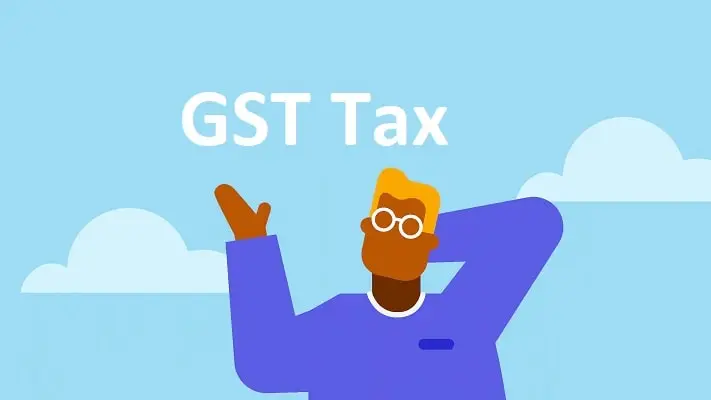The Indian government implemented GST in the year 2017, and this new tax brought up a lot of changes in the overall tax collection regime. Before GST, there were other taxes applicable such as VAT, Excise, Service Tax, and others. But now, all the other options are eliminated by this new taxation scheme. However, it is not perfect, there’s a scope for improvement in this new tax scheme. That’s the reason some people are in favor of the GST implementation, on the other hand, some people want it to be revoked. Well, for sure, every taxation scheme has different sides, and today we will go over what are the advantages and benefits of GST, and what are the things that need to be reformed. So let’s get down to it since there’s a lot to learn about GST.
What Is GST?
GST stands for Goods and Service Act 2017, and it was implemented by the Indian government to eliminate the indirect tax regime. The main motto of GST is “One Nation One Tax.” As mentioned earlier, before GST was introduced, there were other tax collection schemes such as VAT, Excise, Service Tax, etc. These tax schemes were ultimately making the end product’s cost higher for the customer. Not just that, companies and manufacturers had to pay tax on other taxes as well, which resulted in the price hike of the end product/service. But now, all of that has changed, and the GST has made tax collection by the government more transparent than ever before. Also read to know about the different types of GST.

Why is GST Important In India?
There were a lot of loopholes in the overall tax collection process, and many companies and manufacturers used to spoil it for their own good and major profits. But GST has prevented those suspicious activities used by companies and manufacturers. Along with that, tax collection transparency is another thing, which reformed the trust of the public in the government of India. Not just that, GST has made it much easier for foreign companies to enter the Indian manufacturing sector as well as the general market. Similarly, there are some other considerable points proving the importance of GST in India. Now lets move to the pros and cons of GST.
What Are The Advantages of GST?
Here are some benefits of GST:
1. India Has Become Common Market
Before GST was introduced by the Indian government, the interstate trades were a lot slower since there were check posts on the borders of every state. There was tax applicable on the goods traded from one state to another. But now with GST, that is not the case anymore. Since the native of GST is One Nation One Tax, that’s why for the interstate trades, no tax is charged from any party. And this has made India a common market with no boundaries between states. It is a huge plus point of implementing GST in India, and because of this, interstate trades happen 20% faster.
2. No Tax On Tax Process
Suppose a car company has an assembly plant in India, and that car company imports the tires of the car from other manufacturers. In this case, the car company has to pay taxes on the imports of tires, and then when the whole product (car) is ready to sell in the market, the car companies used to apply the tax on the overall end product. This way, ultimately the tax burden was put on the end consumer. But with GST implementation, the tax on tax process has been completely eliminated, which is a good thing for the end consumer.
3. Higher Threshold Limit
Prior to the GST implementation, every business had to pay VAT when crossing the limit of 5 lakh rupees, which is now increased to 15 lakh rupees. This way, small and medium businesses have more freedom, and the burden of taxes is much lower. The new limit is expected to increase up to 20 lakh for businesses in India.
4. File Returns Online
Before GST was introduced in India, the tax collection process was completely offline, but now everything has changed. You can sign up for the GST portal online, and submit the GST online without visiting any physical branch. It is a lot more convenient for businesses and service providers.
5. E-Commerce Business Model Recognition
The E-Commerce business model wasn’t categorized as a proper business until GST implementation. Pre-GST, there were no specific rules and regulations for the E-Commerce category, but now the Indian government has recognized this new business model.
What Are The Disadvantages of GST?
Here are some drawbacks of GST:
1. Increased Cost of Operation
The sudden announcement of GST made the whole financing and accounting thing much more complex for the enterprises and businesses in India. The accounting software that these enterprises and businesses were used to, was now completely useless. And this thing increased the complexity of the taxation process and the overall operation of accounting was now much more costly for the SME/SMBs and huge enterprises as well.
2. Higher Taxes For SME/SMBs
Prior to GST, only businesses with more than 1.5 crore turnover were liable for the excise duty, but now with this new taxation scheme, medium-level businesses with up to 40 lakh turnover also have to pay more taxes under the GST scheme.
3. Increased Initial Difficulties
It is not as considerable as other negatives since initial difficulties occur with almost all the new schemes that reform old laws, rules, and regulations/policies. And the same happened with GST in India. It took the public some time to understand this new tax scheme, but now it has normalized in India to some extent.
Conclusion
For sure there were some initial difficulties with GST, and some people wanted it to be revoked, but it is actually for the greater good of the population of India. And we have tried our best to explain all the positives/advantages as well as negatives of GST to help you understand why this change was needed.
GST Frequently Asked Questions
Q: What is the purpose of GST?
A: The purpose of GST is to create a unified taxation system across the country by replacing multiple indirect taxes such as excise duty, service tax, VAT, and others.
Q: Who is liable to pay GST?
A: Any person or entity that is involved in the supply of goods or services in India and whose turnover exceeds the prescribed threshold limit is liable to pay GST.
Q: What is the GST rate in India?
A: The GST rate in India varies depending on the type of goods or services being supplied. The GST rates are divided into four slabs – 5%, 12%, 18%, and 28%.
Q: How is GST calculated?
A: GST is calculated as a percentage of the value of the goods or services being supplied. For example, if the GST rate is 18% and the value of the goods or services is Rs. 1,000, the GST payable would be Rs. 180.
Q: What is input tax credit (ITC) under GST?
A: Input tax credit is the mechanism through which businesses can claim credit for the GST paid on purchases made for business purposes. It can be claimed against the GST liability on the supplies made by the business.
Q: What is the GST Council?
A: The GST Council is a constitutional body comprising of the Union Finance Minister, the Minister-in-charge of finance or taxation of each state government, and other members as appointed by the President of India. The council is responsible for making recommendations on GST-related issues, such as the rates, exemptions, and thresholds.
Q: What is the GST registration process?
A: Any person or entity that is liable to pay GST must register for GST by submitting an online application on the GST portal. The registration process includes providing details such as the business name, address, PAN, bank account details, and others.
Q: What is the composition scheme under GST?
A: The composition scheme is a simplified taxation scheme available to small businesses whose turnover does not exceed a certain threshold limit. Under this scheme, businesses can pay GST at a lower rate and file quarterly returns instead of monthly returns.
Q: What are the GST returns?
A: GST returns are the periodic statements that registered taxpayers must file with the GST authorities, detailing the sales, purchases, and tax liability of the business. The frequency of filing GST returns varies depending on the turnover of the business.














